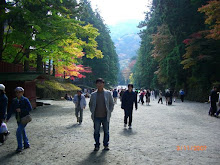As Toyota becomes the world’s biggest automaker, the company finds its much-heralded ways of managing for the long term to be more important than ever before.
Toyota’s way is to measure everything—even the noise that car doors make when they open and close as workers perform their final inspections on newly manufactured automobiles. By any measure, whether esoteric or mundane, Toyota Motor Corporation has become one of the most successful companies in the world today.
Toyota’s ascension is best captured by the Japanese word jojo: “slowly, gradually, and steadily.” The company is proud of the fact that its management principles are different from those taught in B-schools. Senior executives take great pleasure in explaining that other companies find it difficult to emulate Toyota because its management tools matter less than its mind-set.
A series of interviews with Katsuaki Watanabe, Toyota’s 65-year-old president, and several executive vice presidents revealed that Toyota’s future will depend on its ability to strike the right balance—between the short term and the long term; between being a Japanese company and being a global company; between the manufacturing culture of Toyota City and the design culture of Los Angeles, where some of Toyota’s cars take shape; between the cautiousness of Toyota’s veterans, who are worried about growing too fast, and the confidence of its youngsters, who have seen only success. Toyota must also balance incremental improvements with radical reform.

No comments:
Post a Comment